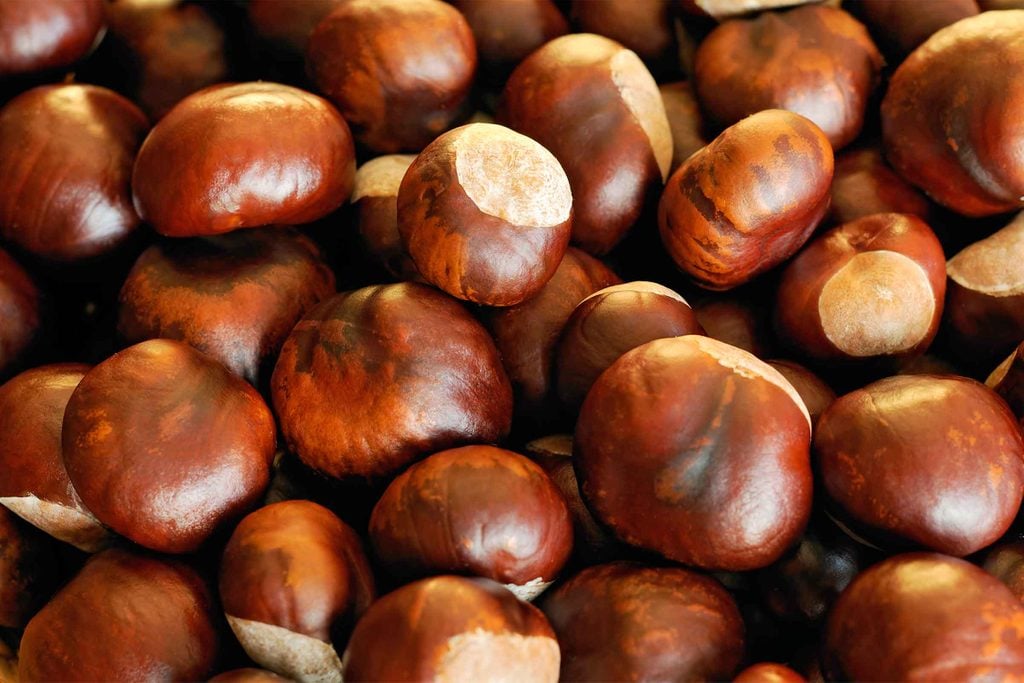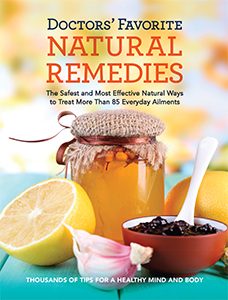Horse Chestnut: How It Can Help Varicose Veins and More
Updated: Sep. 16, 2020

You could use this traditional herbal medicine for bruises, hemorrhoids, varicose veins, and more.
Our editors and experts handpick every product we feature. We may earn a commission from your purchases.
The horse chestnut got its name because farmers once used it to treat chest complaints in horses, according to the National Institutes of Health. The bark, leaves, and seeds—better known as the conkers that children collect in autumn—have been used in traditional herbal medicine for coughs, fever, arthritis, and rheumatism. Today, extracts from the seeds are a well-regarded and clinically validated treatment for varicose veins and other ailments pertaining to the circulatory system.
How horse chestnut works
Horse chestnut has anti-inflammatory, antioxidant, astringent (tightening), and tonic properties. It contains a substance known as aescin, which constricts blood vessels, according to research published in Global Advances in Health and Medicine. Taken orally, or applied topically, horse chestnut helps to tighten tiny blood vessels and reduce cell wall permeability, preventing fluid leakage into surrounding tissue and helping to heal wounds, research suggests. According to a review by Cochrane Library, horse chestnut tones and strengthens vein walls, helping to prevent them from becoming slack or swollen and turning into varicose veins or hemorrhoids, as well as reducing the pain and swelling of existing varicose veins.
In a study published in the Lancet, researchers found that taking horse chestnut extract might be as effective as using compression stockings. Venous ulcers, spider veins, and hemorrhoids may be improved with horse chestnut; it may also help to prevent nosebleeds. Anecdotal reports suggest horse chestnut may be of possible assistance in countering fluid retention in the legs and therefore help prevent deep vein thrombosis, as well as controlling the swelling. These 10 techniques might help erase broken capillaries.
How to use horse chestnut
Horse chestnut is available as tablets, capsules, and tinctures. Look for products containing standardized extracts of aescin. Follow label instructions or take as professionally prescribed. Horse chestnut may also be applied topically, via a lotion or a cream made by an herbalist.
Safety first
The unprocessed seeds, bark, leaves and particularly flowers are poisonous. Don’t take horse chestnut if you are taking anticoagulant or other blood-thinning medications, or if you have kidney or liver disorders, or are pregnant or breastfeeding. Side effects from taking horse chestnut are rare but may include an itchy rash, upset stomach or nausea. Do not apply topically to broken skin. Like horse chestnuts, these old-time home remedies need to make a comeback.
Where to find horse chestnut
Horse chestnut products can be found in health food stores and pharmacies, and from a qualified herbalist, who may supply it as a tincture combined with synergistic herbs.

Get more natural remedies that doctors approve
The book Doctors’ Favorite Natural Remedies offers effective ways to treat more than 85 health conditions and evaluates the most commonly used alternative therapies and supplements. Learn more and buy Doctors’ Favorite Natural Remedies here.